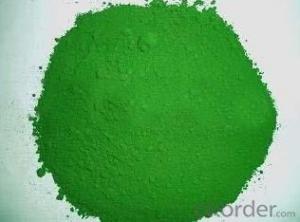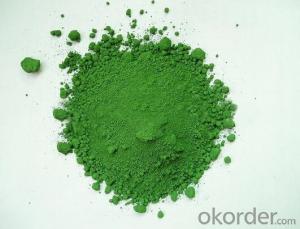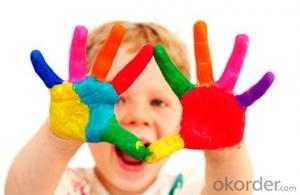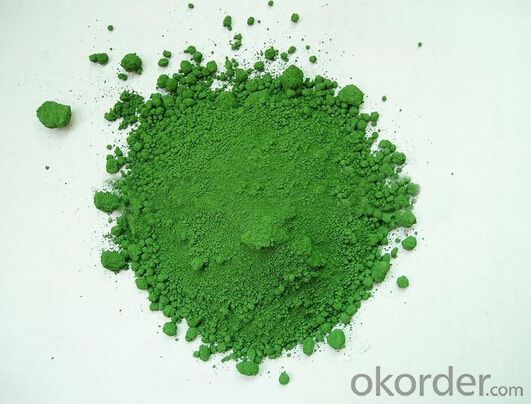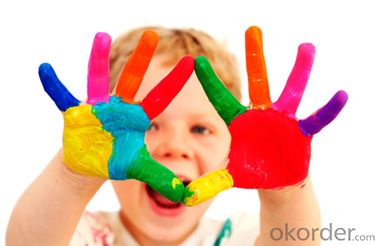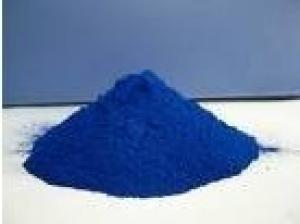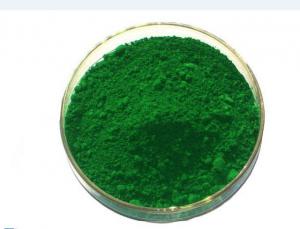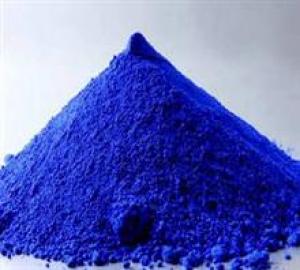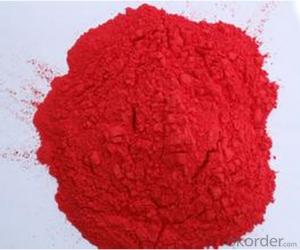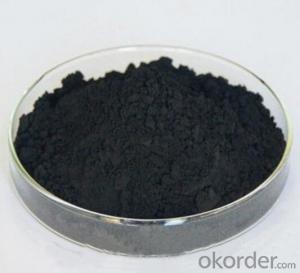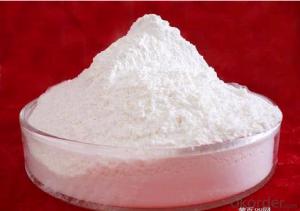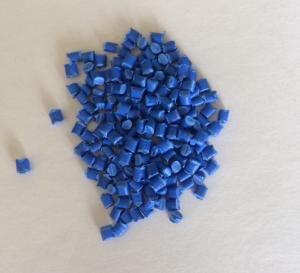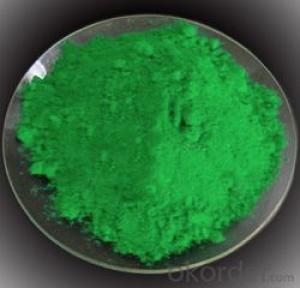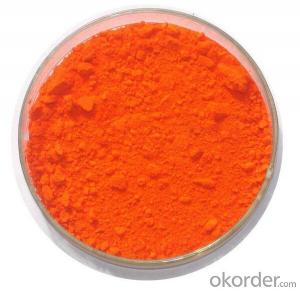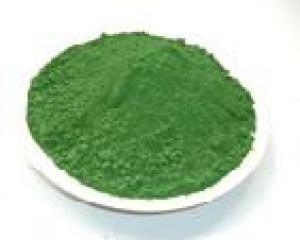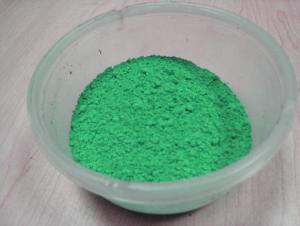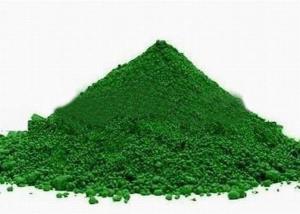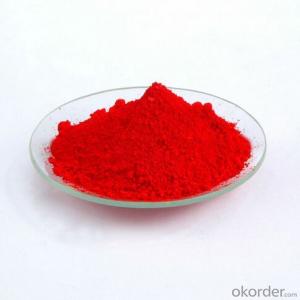Chrome Green Pigment Organic Pigment Powder
- Loading Port:
- Tianjin
- Payment Terms:
- TT OR LC
- Min Order Qty:
- 500 kg
- Supply Capability:
- 6000000 kg/month
OKorder Service Pledge
OKorder Financial Service
You Might Also Like
Chrome Green Specification:
Standard: HG/T2775-2010
Items | Specifications |
Cr2O3 Content % | 99.0 min |
Moisture % | 0.20 max |
Water soluble matter % | 0.30 max |
Oil absorption (g/100g)% | 15-25g/100g |
Tinting strength % | 100+/-5 |
Residue on 325mesh) % | 0.10 max |
sexivalent chrome content% | 0.005 max |
PH Value (100g/L suspension liquid)% | 6-8 max |
Color/Appearance | Green powder |
Chrome Green Chemical and Physical Properties:
Product name: Chrome Oxide Green
Appearance: Light or dark green powder
EINECS NO.: 215-160-9
CAS No.:1308-38-9
HS.Code:2819900000
Molecular Formula: Cr2O3
Properties:Chrome green is a green crystal powder, metal luster, magnetic, good covering strength, high-temperature-resisting and sunlight fastness. Not soluble in water, barely soluble in acids, comparatively stable in air, unaffected by acids and alkalis of common density, sulfur dioxide, sulfur hydrogen etc. Chrome oxide green enjoys excellent quality and firmness of coloring.
Chrome Green Applications:
Chrome green is used in smelting of metal chrome, as coloring agent of chrome carbide, enamel, glass, artificial leather and building material, as organic synthetic catalyst, in making of sunlight fastness coatings, special printing ink for paper money, making of polishing ointment and abrasive etc.
Chrome Green Package:
Chrome green is packed in 25kgs, 50kgs woven bags lined with PE liner or as request.
20-24MT will be loaded in per 20’FCL container.
Chrome Green Attention and Storage:
Chrome green shoud be stored in an airtight container, in a cool, ventilated place or specified place; Avoid taboo things.

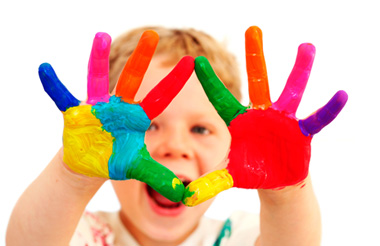
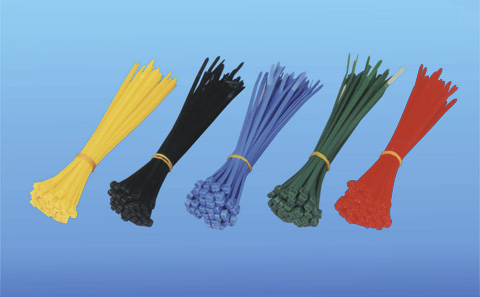
- Q: do all leaves extract contain the same pigments??why?
- Plants okorder /... Plants have classes of pigments that act as adjuncts to the chloroplast's chlorophyll, in several ways. Some are accessory pigments that broaden the range of absorbed light. These pigments are found in the light gathering arrays in chloroplasts. They also alter the color of the leaf depending on what specific pigments it has to gather light energy and that determines what is reflected (green is the basic reflected spectra but is might be yellowish or bluish green). The major accessory class of pigments, the carotenoids, collect light in the red to yellow wavelengths chlorophyll a can’t, then the carotenoids transfer the energy to chlorophyll a to process. Among the carotenoids are the xanthophylls that provide UV protection for the light gathering centers of the chloroplast. Plants adapt to situations and some just have fewer chloroplasts so have less chlorophyll and absorb less of the light. In low light situations they need fewer so variegated plants are possible. This reduced chlorophyll level allows small amounts of other pigments like the yellow pigment xanthophyll to show up.
- Q: like what's the definition relating to sunlight
- Pigments are substances which are used familiarly to create pictures and printings. Pigments give an object a color when in a field of incident white light. Pigments themselves absorb a set of incident colors of light and reflect all others. When multiple pigments are mixed, their ability to absorb colors is added, such that their ability to reflect colors is subtracted.
- Q: Why does a plant use several pigments instead of one or two?Why are plant leaves green?
- Pigments are a way for a plant to absorb the sun's energy in the form of light (photosynthesis). The different colored pigments absorb different wavelengths of light and pass it on directly to the plant to make energy, except for one class called the carotenoids, which much pass it on the the chlorophyll before anything happens The plants leaves are green because they absorb all the other wavelengthss (red, blue, oragne etc) except the green one, and the reflection of the green is what our eyes see.
- Q: Explain light activation of pigments (absorption of light by pigments)?
- A pigment is a substance that imparts color by absorbing some frequencies of visible light but not others. For instance, there are a lot of substances that absorb ultraviolet light into the visible spectrum, in other words they also absorb plain violet light. Since they absorb violet light but reflect back the rest of light, they appear yellow. Purple pigments, on the other hand, are quite rare because they absorb purple light (which has the highest energy of visible light) and reflect back everything else. When anything absorbs a photon of electromagnetic radiation (light, x-rays, ultraviolet, infrared, microwaves, gamma rays, radio waves), it is activated which means that it takes the energy of the photon and goes to an energy state that is higher by the same amount of energy that was in the photon. At the molecular level, energy is quantized, meaning its restricted to particular states. For instance, vibrational energy corresponds to infrared light: there are only certain ways, called modes, that a molecule can vibrate in, if it can't vibrate in an appropriate mode, it can't absorb the infrared radiation that corresponds to being promoted to that mode. That's why substances can be transparent. At the higher energy state, the substance might be able to participate in chemical reactions that it would not be able to participate in in a lower state. That's usually what is meant by light activation. So a pigment that absorbs visible or UV light might become activated and react with something or react in ways that it wouldn't be able to in the dark.
- Q: what the book says is that they 'harvest additional wavelengths.' i don't know what this means to how its an advantage.. can somone explain?
- Each photon has a particular wavelength, determined by the photon's energy. A pigment such as chlorophyll can only absorb photons in particular wavelength bands, matching the energies of available electron transitions to excited states. For chlorophyll, these bands are in blue and red -- the green color of most leaves is due to the waste light that is not absorbed by chlorophyll, while red and blue photons can be absorbed and used to power photosynthesis. An accessory pigment can absorb a photon that has a wavelength (color) outside of the bands that chlorophyll is able to absorb and can pass some of the absorbed energy on to chlorophyll, getting rid of the excess energy in another form, such as heat. A pigment might be tuned to absorb a photon of yellow light; the absorbed energy, stored in the excited state of an electron, is called an exciton (the photon becomes an exciton, so energy is not created or destroyed). The exciton can be passed to a chlorophyll, but only with the same energy as the red photon that the chlorophyll could normally absorb directly. The excess energy, the difference in energy between the yellow and red photon, must be dissipated in another form. This process allows a plant to harvest photons that would otherwise be unavailable to its photosystems. Consider how this would be an advantage to a plant living on a shaded forest floor, or to a planktonic cyanobacteria floating in the water below other photosynthetic algae, in regions where photosynthetically useful photons are scarce.
- Q: hi:]i need the right order to apply skin pigments...
- Pigments are usually packaged in a finely milled loose powder form. After cleansing , toning and moisturizing,let the moisturizer absorb in the skin. Apply the skin pigments using a large compact powder brush/kabuki brush in a circular motion on face neck, then apply a second layer in a downward motion. Then use Evian water Mister to set the pigment. For eye pigments, put a thin layer of skin pigment first, then apply the eye pigment using a oval shaped dome brush
- Q: 1.what is pigment2.what is it for ( whats its purpose?)3.what are other things people do with it
- Pigment is a loose powder that has highly concentrated color. They come in different finishes like matte or shimmery. You can use them as eye shadows and such, which is what most people do with them. They show up better and the metallic ones can be foiled (more vivid color and looks like metal almost) if you use them wet by putting a little bit of mixing medium or eye drops on your brush before dipping it in the pigment and applying it. They can also be used as lip colors by mixing with a clear lipgloss, or eyeliner if you use them wet or mix them with something like MAC's special eyeliner mixing medium. They also make a mascara mixing medium that can be used with pigments. Pigments really are a handy, universal product to have! Keep in mind that some pigments are not safe for use in the eye and/or lip area. If you look at MAC's website where the pigments are, you can check out the specifics about that under View Recommended Use. Also, if you use pigments wet, it's best to get a little bit of it in the jar lid, then dip the brush in it. That way you won't dampen and ruin the pigments in the jar, and moisture in the jar could promote the growth of bacteria.
- Q: what roles do pigments have in energy transfer?
- Pigments okorder /... When a photon of just the right amount of energy strikes an electron resonating in the pigment, the electron can absorb the photon and get promoted to a higher quantum level. The photon must have just the exact amount of energy to boost the electron from its current level to its new level or it cannot be absorbed. If the incoming photon is just right to promote an electron, in that pigment, the newly energized electron resonates along the bonds at the higher energy level where it can pass to the photosynthetic reaction center from the pigment array, to split water and take back an electron. Meanwhile the chlorophyll's electron passes to the electron transport chain to begin oxidative phophorylation.
- Q: (After the fifteenth century)
- Pigment is color in powder form. An example is lamp black; it was first made from the soot of kerosene lamps ground fine. Binder is a substance used to hold pigment together and make it adhere; in the previous example, linseed oil would be the binder for the lamp black pigment. Vehicle is a medium acting as a solvent, carrier, or binder for paint; turpentine or mineral spirits would be a vehicle but so would linseed oil as well to help dilute the paint and help it cover a large area. Hope that helps and thanx.
Send your message to us
Chrome Green Pigment Organic Pigment Powder
- Loading Port:
- Tianjin
- Payment Terms:
- TT OR LC
- Min Order Qty:
- 500 kg
- Supply Capability:
- 6000000 kg/month
OKorder Service Pledge
OKorder Financial Service
Similar products
Hot products
Hot Searches
Related keywords
